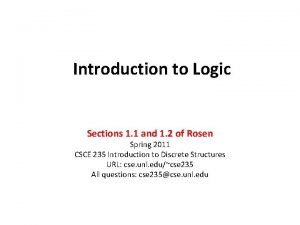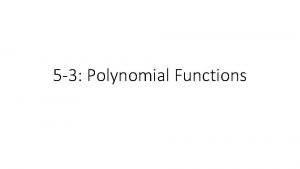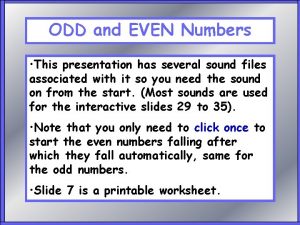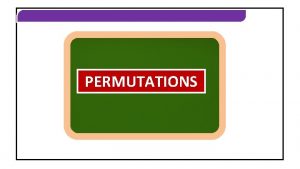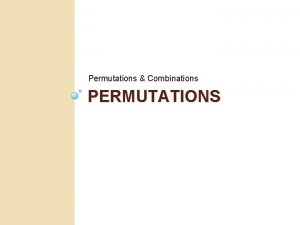Odd and Even Permutations Proposition 11 Let Sn



- Slides: 3

Odd and Even Permutations • • • Proposition 11: Let Sn and suppose is decomposed into transpositions as: = 1 • 2 • …. . • a and = 1 • 2 • …. . • b. Then a and b have the same parity; i. e. either both are odd or both are even. Definition: Let Sn and let i, j {1, 2, 3, …, n} with i < j. The pair (i, j) is called an inversion in if (i) > (j). Lemma 1: Let (cd) be a transposition in Sn with c < d. Then the number of inversions in (cd) is 2(d – c – 1) + 1. Lemma 2: If the identity permutation is written as a composition of transpositions, then the number of transpositions must be even. Definition: Let Sn. Then is said to be even provided it can be written as a composition of an even number of transpositions. Otherwise, can be written as a composition of an odd number of transpositions and it is then said to be odd. Remark: This definition makes sense in view of Proposition 11.

Inversions in a Permutation • • Notation: For a permutation Sn, let I denote the set of inversions of , i. e. I = {(i, j): 1 i < j n and (i) > (j)}, and let n( ) = | I | denote the number of inversions of . Proposition 12 (More powerful version of Proposition 10 and its corollary): For a permutation Sn, a) can be expressed as a product of n( ) simple transpositions. b) n( ) is the minimal number of simple transpositions required in writing as the product of simple transpositions. Remark 1: Proposition 12 can be proved using PMI but is not easy. Remark 2: For those who have studied sorting: you may have noticed that bubble sort is essentially equivalent to expressing a permutation as a product of simple transpositions.

The Alternating Group • • Definition: For a permutation Sn, its sign or signature is defined by sgn( ) = ( – 1 ) n( ); more simply, sgn( ) = 1 if and only if is even and sgn( ) = – 1 if and only if is odd. Remark: the sign of a transposition is (– 1); for a kcycle = (a 1 a 2. . ak), sgn( ) = ( – 1 ) k – 1. Proposition 13: For , Sn, sgn( ) = sgn( ). Definition: in view of Proposition 13, the even permutations form a subgroup of Sn called the Alternating Group on n elements, notation An.

